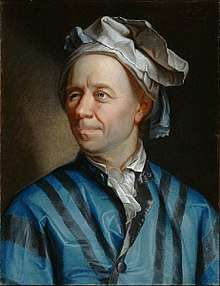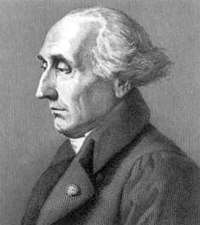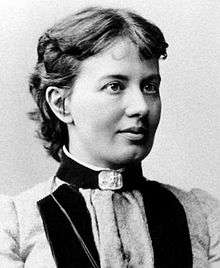Lagrange, Euler, and Kovalevskaya tops



In classical mechanics, the precession of a rigid body such as a top under the influence of gravity is not, in general, an integrable problem. There are however three (or four) famous cases that are integrable, the Euler, the Lagrange, and the Kovalevskaya top.[1][2] In addition to the energy, each of these tops involves three additional constants of motion that give rise to the integrability.
The Euler top describes a free top without any particular symmetry, moving in the absence of any external torque in which the fixed point is the center of gravity. The Lagrange top is a symmetric top, in which two moments of inertia are the same and the center of gravity lies on the symmetry axis. The Kovalevskaya top[3][4] is a special symmetric top with a unique ratio of the moments of inertia which satisfy the relation
That is, two moments of inertia are equal, the third is half as large, and the center of gravity is located in the plane perpendicular to the symmetry axis (parallel to the plane of the two equal points). The nonholonomic Goryachev–Chaplygin top (introduced by D. Goryachev in 1900[5] and integrated by Sergey Chaplygin in 1948[6][7]) is also integrable ( ). Its center of gravity lies in the equatorial plane.[8]
Hamiltonian formulation of classical tops
A classical top[9] is defined by three principal axes, defined by the three orthogonal vectors , and with corresponding moments of inertia , and . In a Hamiltonian formulation of classical tops, the conjugate dynamical variables are the components of the angular momentum vector along the principal axes
and the z-components of the three principal axes,
The Poisson algebra of these variables is given by
If the position of the center of mass is given by , then the Hamiltonian of a top is given by
The equations of motion are then determined by
Euler top
The Euler top is an untorqued top, with Hamiltonian
The four constants of motion are the energy and the three components of angular momentum in the lab frame,
Lagrange top
"Physically, the Lagrange top is a symmetric rigid body spinning about its figure axis whose base point is fixed. A constant vertical gravitational force acts on the center of mass of the top, which lies on its axis."[10]
The Lagrange top (so named after Joseph-Louis Lagrange) is a symmetric top with the center of mass along the symmetry axis at location, , with Hamiltonian
The four constants of motion are the energy , the angular momentum component along the symmetry axis, , the angular momentum in the z-direction
and the magnitude of the n-vector
Kovalevskaya top
The Kovalevskaya top[3][4] is a symmetric top in which and the center of mass lies in the plane perpendicular to the symmetry axis . It was discovered by Sofia Kovalevskaya in 1888 and presented in her paper "Sur le problème de la rotation d'un corps solide autour d'un point fixe", which won the Prix Bordin from the French Academy of Sciences in 1888. The Hamiltonian is
The four constants of motion are the energy , the Kovalevskaya invariant
where the variables are defined by
the angular momentum component in the z-direction,
and the magnitude of the n-vector
See also
References
- ↑ Audin, Michèle (1996), Spinning Tops: A Course on Integrable Systems, New York: Cambridge University Press, ISBN 9780521779197 .
- ↑ Whittaker, E. T. (1952). A Treatise on the Analytical Dynamics of Particles and Rigid Bodies. Cambridge University Press. ISBN 9780521358835.
- 1 2 Kovalevskaya, Sofia (1889), "Sur le problème de la rotation d'un corps solide autour d'un point fixe", Acta Mathematica, 12: 177–232 (in French)
- 1 2 Perelemov, A. M. (2002). Teoret. Mat. Fiz., Volume 131, Number 2, pp. 197–205. (in French)
- ↑ Goryachev, D. (1900). "On the motion of a rigid material body about a fixed point in the case A = B = C", Mat. Sb., 21. (in Russian). Cited in Bechlivanidis & van Moerbek (1987) and Hazewinkel (2012).
- ↑ Chaplygin, S.A. (1948). "A new case of rotation of a rigid body, supported at one point", Collected Works, Vol. I, pp. 118–124. Moscow: Gostekhizdat. (in Russian). Cited in Bechlivanidis & van Moerbek (1987) and Hazewinkel (2012).
- ↑ Bechlivanidis, C.; van Moerbek, P. (1987), "The Goryachev–Chaplygin Top and the Toda Lattice", Communications in Mathematical Physics, 110: 317–324, Bibcode:1987CMaPh.110..317B, doi:10.1007/BF01207371
- ↑ Hazewinkel, Michiel; ed. (2012). Encyclopaedia of Mathematics, pp. 271–2. Springer. ISBN 9789401512886.
- ↑ Herbert Goldstein, Charles P. Poole, and John L. Safko (2002). Classical Mechanics (3rd Edition), Addison-Wesley. ISBN 9780201657029.
- ↑ Cushman, R.H.; Bates, L.M. (1997), "The Lagrange top", Global Aspects of Classical Integrable Systems, Basel: Birkhäuser, ISBN 978-3-0348-9817-1 .